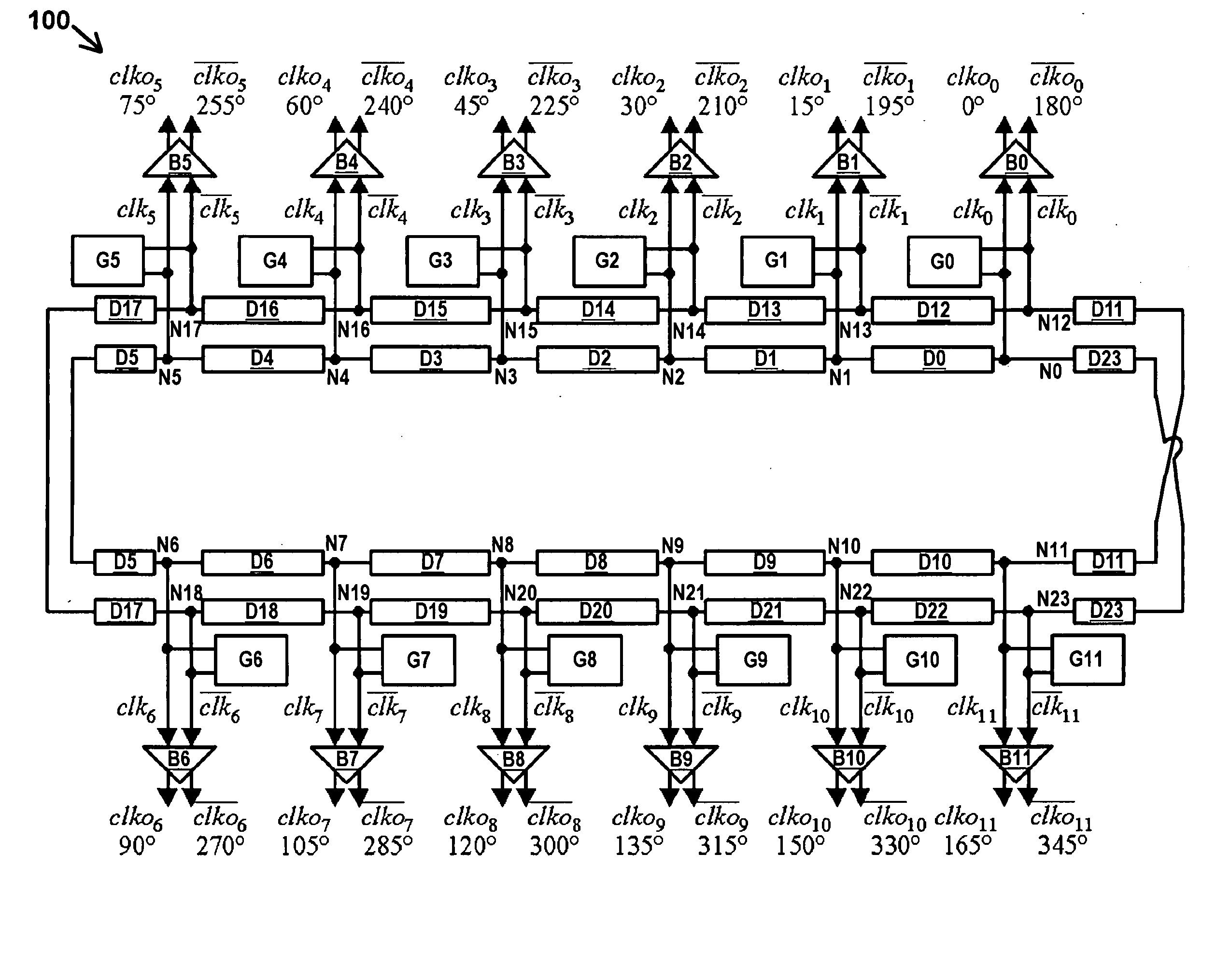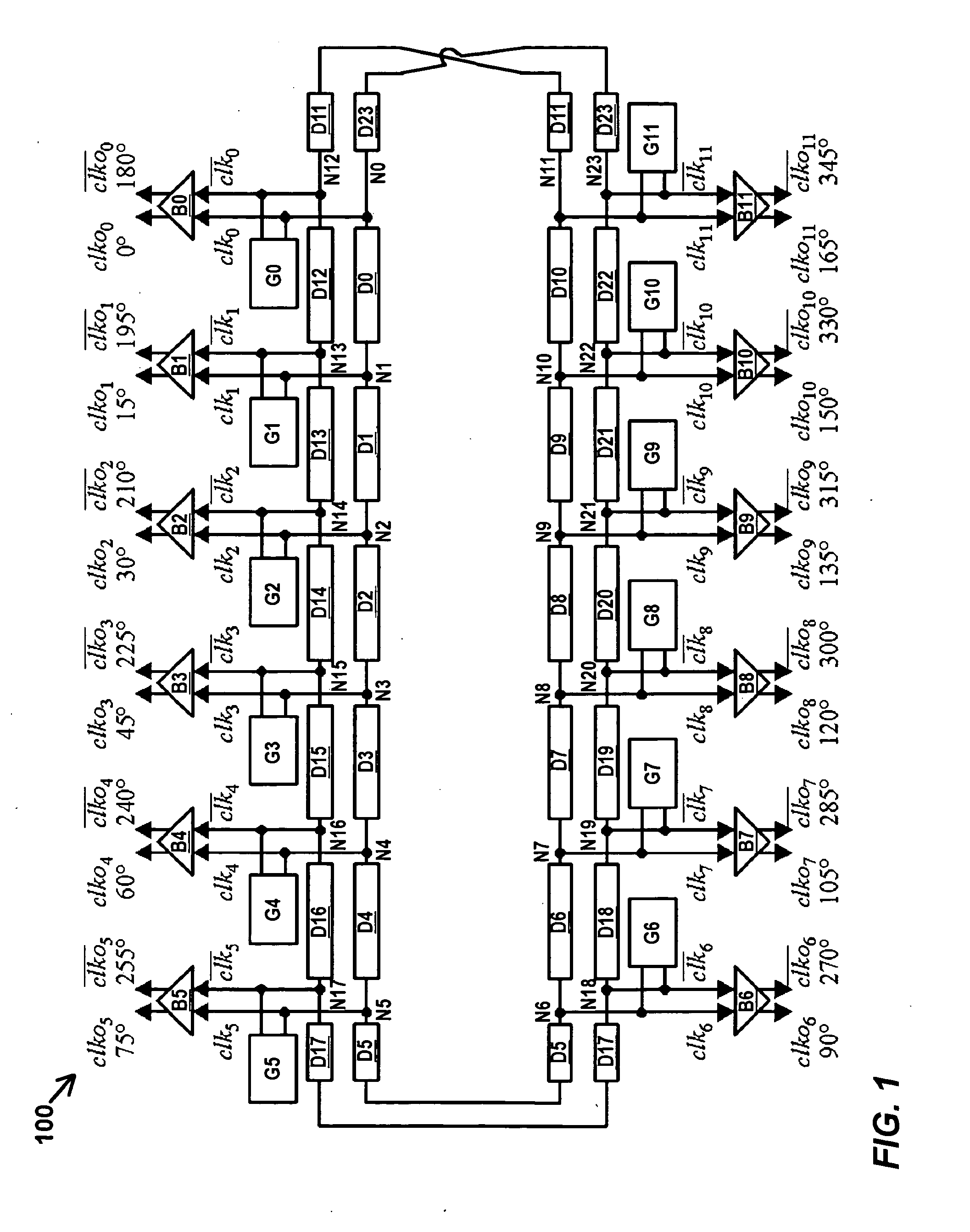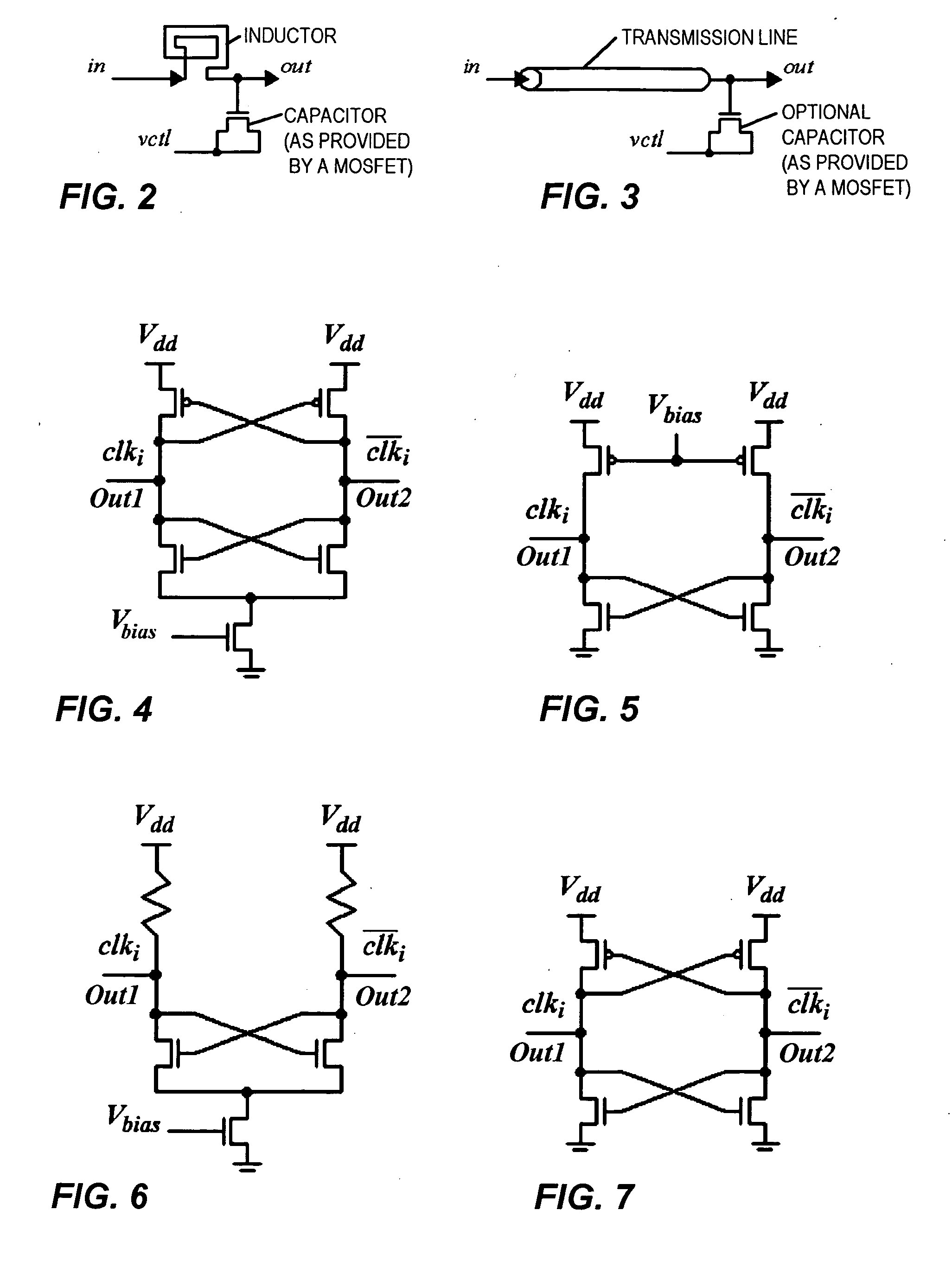Electronic oscillators having a plurality of phased outputs and such oscillators with phase-setting and phase-reversal capability
a technology of electronic oscillators and phase outputs, applied in the field of electronic oscillators, can solve problems such as undesirable power dissipation and noise effects, and achieve the effect of reducing the power consumption improving the noise characteristics of multiphased electronic oscillators
- Summary
- Abstract
- Description
- Claims
- Application Information
AI Technical Summary
Benefits of technology
Problems solved by technology
Method used
Image
Examples
third embodiment
[0044]FIG. 11 shows an oscillator according to the present invention at 300. Oscillator 300 comprises the same components as oscillator 200, except for the omission of delay stages D61-D72 and nodes N62-N73. The components of oscillator 300 are configured the same way as the corresponding components of oscillator 200 except that the output of the circuit formed by transistors N2 and P2 is coupled to node N61 instead of node N73, and except that the modulation terminals of control transistors T12-T23 are coupled to nodes N50-N61, respectively, instead of nodes N62-N73, respectively. As such, the control chain of delay stages only forms one ring around the delay loop, and the same control signal at a control node (N50-N61) controls both pairs of control transistors associated with each negative-resistance element G0-G11. After being placed in the reset state, oscillator 300 is set to one of the two oscillation directions by activating either of signals STA or STB, as described above w...
fourth embodiment
[0045]FIG. 12 shows an oscillator according to the present invention at 400. Oscillator 400 comprises the same components as oscillator 300, except for control transistors T12-T23, which are not used. The components of oscillator 400 are configured the same way as the corresponding components of oscillator 300 except that the first and second conduction terminals of each control transistor T0-T11 are coupled to the first and second outputs, respectively, of a respective negative-resistance element G0-G11, as shown in the figure. Oscillator 400 is reset and thereafter set to oscillate in one of two oscillation directions by the same sequence of steps described above for oscillators 200 and 300. Under reset conditions, each of transistors T0-T11 is conductive, and couples the adjacent nodes of the loop (e.g., adjacent nodes N0 and N12, and so on) together, and sets (clamps) their voltages to substantially the same value. In addition, this presents a positive resistance to both outputs...
PUM
 Login to View More
Login to View More Abstract
Description
Claims
Application Information
 Login to View More
Login to View More - R&D
- Intellectual Property
- Life Sciences
- Materials
- Tech Scout
- Unparalleled Data Quality
- Higher Quality Content
- 60% Fewer Hallucinations
Browse by: Latest US Patents, China's latest patents, Technical Efficacy Thesaurus, Application Domain, Technology Topic, Popular Technical Reports.
© 2025 PatSnap. All rights reserved.Legal|Privacy policy|Modern Slavery Act Transparency Statement|Sitemap|About US| Contact US: help@patsnap.com



